Volume 1-8 (2009-16)
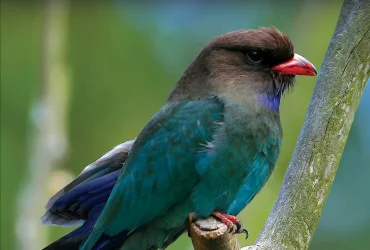 v4i1.62
v4i1.62ISSN: 1800-427X (print)
eISSN: 1800-427X (online)
DOI:10.47605/tapro.v4i1.62
Submitted date: 6 September 2011
Accepted date: 23 May 2012
Published date: 28 May 2012
Pp. 27–36.
A REVIEW OF THE DISTRIBUTION OF BATS IN SOUTHWESTERN REGION OF DECCAN, MAHARASHTRA - INDIA AND CONSERVATION RECOMMENDATIONS
Mahesh C. Gaikwad, Sujit S. Narwade*, Kamlakar M. Fartade & Vishakha S. Korad
*Corresponding author. E-mail: sujitsnarwade@gmail.com
Abstract
In present survey carried out in the South-West region of Maharashtra, India, 11 bat species were reported from the study area. The area comprised four districts of Maharashtra namely Pune, Satara, Solapur and Osmanabad. It was also found that all the bat species mentioned in this paper are much more widely distributed than was previously recorded and populations occur in areas for which only single or scattered records were previously available. Conversion of habitats of bats for various purposes by humans was found as one of the important threats to bats in region.
[b]Key words :Chiroptera, fruit bat, leaf-nosed bat, false vampire, flying fox, Pipistrelle, ecology
Section Editor: Colin Chapman
eISSN: 1800-427X (online)
DOI:10.47605/tapro.v4i1.62
Submitted date: 6 September 2011
Accepted date: 23 May 2012
Published date: 28 May 2012
Pp. 27–36.
A REVIEW OF THE DISTRIBUTION OF BATS IN SOUTHWESTERN REGION OF DECCAN, MAHARASHTRA - INDIA AND CONSERVATION RECOMMENDATIONS
Mahesh C. Gaikwad, Sujit S. Narwade*, Kamlakar M. Fartade & Vishakha S. Korad
*Corresponding author. E-mail: sujitsnarwade@gmail.com
Abstract
In present survey carried out in the South-West region of Maharashtra, India, 11 bat species were reported from the study area. The area comprised four districts of Maharashtra namely Pune, Satara, Solapur and Osmanabad. It was also found that all the bat species mentioned in this paper are much more widely distributed than was previously recorded and populations occur in areas for which only single or scattered records were previously available. Conversion of habitats of bats for various purposes by humans was found as one of the important threats to bats in region.
[b]Key words :Chiroptera, fruit bat, leaf-nosed bat, false vampire, flying fox, Pipistrelle, ecology
Section Editor: Colin Chapman
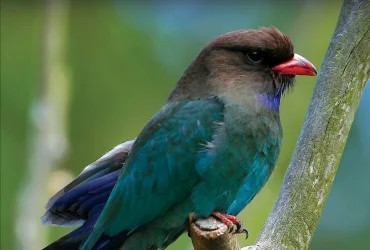 v4i1.61
v4i1.61ISSN: 1800-427X (print)
eISSN: 1800-427X (online)
DOI:10.47605/tapro.v4i1.61
Submitted date: 13 January 2012
Accepted date: 2 March 2012
Published date: 28 May 2012
Pp. 20–26.
REPTILE DIVERSITY IN BERALIYA MUKALANA PROPOSED FOREST RESERVE, GALLE DISTRICT, SRI LANKA
D.M.S. Suranjan Karunarathna & A. A. Thasun Amarasinghe*
*Corresponding author. E-mail: thasun.taprobanica@gmail.com
Abstract
Beraliya Mukalana Proposed Forest Reserve (BMPFR) is a fragmented lowland rainforest patch in Galle District, Sri Lanka. During our two-year survey we recorded a total of 66 species of reptile (28 Lizards, 36 Snakes and 2 Tortoises), which represents 31.4 % of the total Sri Lankan reptile fauna. Thirty-five of the species are endemic to Sri Lanka. Of the recorded 66 species, 1 species is Critically Endangered, 3 are Endangered, 6 are Vulnerable, 14 are Near-threatened and 4 are Data-deficient. This important forest area is threatened by harmful anthropogenic activities such as illegal logging, use of chemicals and land-fill. Environmental conservationists are urged to focus attention on this Wet-zone forest.
[b]Key words :Endemics, species richness, threatened, ecology, conservation, wet-zone
Section Editor: John Rudge
eISSN: 1800-427X (online)
DOI:10.47605/tapro.v4i1.61
Submitted date: 13 January 2012
Accepted date: 2 March 2012
Published date: 28 May 2012
Pp. 20–26.
REPTILE DIVERSITY IN BERALIYA MUKALANA PROPOSED FOREST RESERVE, GALLE DISTRICT, SRI LANKA
D.M.S. Suranjan Karunarathna & A. A. Thasun Amarasinghe*
*Corresponding author. E-mail: thasun.taprobanica@gmail.com
Abstract
Beraliya Mukalana Proposed Forest Reserve (BMPFR) is a fragmented lowland rainforest patch in Galle District, Sri Lanka. During our two-year survey we recorded a total of 66 species of reptile (28 Lizards, 36 Snakes and 2 Tortoises), which represents 31.4 % of the total Sri Lankan reptile fauna. Thirty-five of the species are endemic to Sri Lanka. Of the recorded 66 species, 1 species is Critically Endangered, 3 are Endangered, 6 are Vulnerable, 14 are Near-threatened and 4 are Data-deficient. This important forest area is threatened by harmful anthropogenic activities such as illegal logging, use of chemicals and land-fill. Environmental conservationists are urged to focus attention on this Wet-zone forest.
[b]Key words :Endemics, species richness, threatened, ecology, conservation, wet-zone
Section Editor: John Rudge
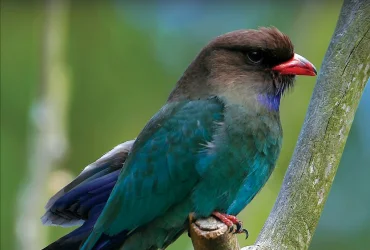 v4i1.60
v4i1.60ISSN: 1800-427X (print)
eISSN: 1800-427X (online)
DOI:10.47605/tapro.v4i1.60
Submitted date: 12 August 2011
Accepted date: 2 April 2012
Published date: 28 May 2012
Pp. 12–19.
COVER-DEPENDENCY OF ANURANS IN THE RIVERSTONE, KNUCKLES MOUNTAIN FOREST RANGE, SRI LANKA
Senarathge R. Weerawardhena* & Anthony P. Russell
*Corresponding author. E-mail: zoosrw@kln.ac.lk
Abstract
The species composition of anurans was studied in the disturbed and undisturbed sub-montane forest habitats in the Riverstone of the Knuckles Mountain Forest Range of Sri Lanka. Twenty one anuran species were encountered. The distribution pattern of collected anuran species was related to the percentage of vegetational cover and they were categorized in relation to dependency on the vegetational cover.
[b]Key words :Abundance, leaf-litter, amphibians, ecology, conservation, Dumbara highlands
Section Editor: Enrique La Marca
eISSN: 1800-427X (online)
DOI:10.47605/tapro.v4i1.60
Submitted date: 12 August 2011
Accepted date: 2 April 2012
Published date: 28 May 2012
Pp. 12–19.
COVER-DEPENDENCY OF ANURANS IN THE RIVERSTONE, KNUCKLES MOUNTAIN FOREST RANGE, SRI LANKA
Senarathge R. Weerawardhena* & Anthony P. Russell
*Corresponding author. E-mail: zoosrw@kln.ac.lk
Abstract
The species composition of anurans was studied in the disturbed and undisturbed sub-montane forest habitats in the Riverstone of the Knuckles Mountain Forest Range of Sri Lanka. Twenty one anuran species were encountered. The distribution pattern of collected anuran species was related to the percentage of vegetational cover and they were categorized in relation to dependency on the vegetational cover.
[b]Key words :Abundance, leaf-litter, amphibians, ecology, conservation, Dumbara highlands
Section Editor: Enrique La Marca
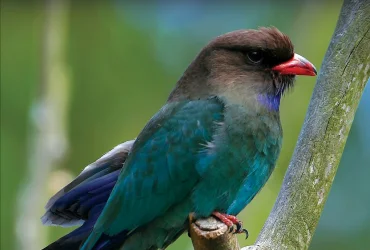 v4i1.59
v4i1.59ISSN: 1800-427X (print)
eISSN: 1800-427X (online)
DOI:10.47605/tapro.v4i1.59
Submitted date: 18 December 2011
Accepted date: 22 May 2012
Published date: 28 May 2012
Pp. 5–11.
Physoschistura tuivaiensis, A NEW SPECIES OF LOACH (TELEOSTEI: NEMACHEILIDAE) FROM THE TUIVAI RIVER, MANIPUR, INDIA
Yumnam Lokeshwor*, Waikhom Vishwanath & Keisham Shanta
*Corresponding author. E-mail: lokeyum24@gmail.com
Abstract
Physoschistura tuivaiensis is described from Likhailok on the Tuivai River, a tributary of the Brahmaputra River in southern Manipur, India. It is distinguished from congeneric species except P. shanensis and P. yunnaniloides by having a complete lateral line. It can be distinguished from those two species by the presence of 12-14 dark olivaceous blotches on the flank, and 15-17 dark olivaceous saddles on the back, more branched caudal fin rays, and 4+8 pores in the infraorbital canal. Examination of the holotype of Physoschistura elongata shows lip morphology different from Physoschistura, and the species is referred tentatively to Schistura.
Key words : Anatomy, freshwater, morphology, taxonomy, Brahmaputra River
Section Editor: Sven O Kullander
eISSN: 1800-427X (online)
DOI:10.47605/tapro.v4i1.59
Submitted date: 18 December 2011
Accepted date: 22 May 2012
Published date: 28 May 2012
Pp. 5–11.
Physoschistura tuivaiensis, A NEW SPECIES OF LOACH (TELEOSTEI: NEMACHEILIDAE) FROM THE TUIVAI RIVER, MANIPUR, INDIA
Yumnam Lokeshwor*, Waikhom Vishwanath & Keisham Shanta
*Corresponding author. E-mail: lokeyum24@gmail.com
Abstract
Physoschistura tuivaiensis is described from Likhailok on the Tuivai River, a tributary of the Brahmaputra River in southern Manipur, India. It is distinguished from congeneric species except P. shanensis and P. yunnaniloides by having a complete lateral line. It can be distinguished from those two species by the presence of 12-14 dark olivaceous blotches on the flank, and 15-17 dark olivaceous saddles on the back, more branched caudal fin rays, and 4+8 pores in the infraorbital canal. Examination of the holotype of Physoschistura elongata shows lip morphology different from Physoschistura, and the species is referred tentatively to Schistura.
Key words : Anatomy, freshwater, morphology, taxonomy, Brahmaputra River
Section Editor: Sven O Kullander
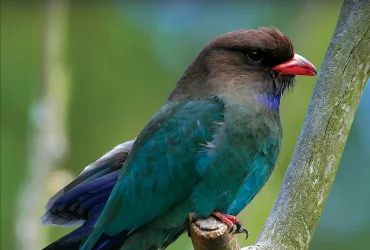 v4i1.58
v4i1.58ISSN: 1800-427X (print)
eISSN: 1800-427X (online)
DOI:10.47605/tapro.v4i1.58
Published date: 28 May 2012
Pp. 1–4
EDITORIAL : How embarrassing can it get? Or: Taxonomy undermined
Sven O Kullander
Section Editor: Taprobanica, the journal of Asian Biodiversity
Whereas biological systematics and taxonomy are probably about the same kind of scientific enterprise, they were separated by Ernst Mayr in his classical text book, and taxonomy became cemented as a subset of systematics. A little over 40 years have passed since these definitions were expressed, and the work in which they appeared has become obsolete with the appearance of new technology and new philosophy about what are the fundamental aspects of species and higher taxa, especially with the development of phylogenetic systematics and facility of studying factors of inheritance at molecular level. Nevertheless, biological systematics remains the fundamental powerful scientific domain for understanding and expressing biological diversity, and keeps its definitions.
eISSN: 1800-427X (online)
DOI:10.47605/tapro.v4i1.58
Published date: 28 May 2012
Pp. 1–4
EDITORIAL : How embarrassing can it get? Or: Taxonomy undermined
Sven O Kullander
Section Editor: Taprobanica, the journal of Asian Biodiversity
Whereas biological systematics and taxonomy are probably about the same kind of scientific enterprise, they were separated by Ernst Mayr in his classical text book, and taxonomy became cemented as a subset of systematics. A little over 40 years have passed since these definitions were expressed, and the work in which they appeared has become obsolete with the appearance of new technology and new philosophy about what are the fundamental aspects of species and higher taxa, especially with the development of phylogenetic systematics and facility of studying factors of inheritance at molecular level. Nevertheless, biological systematics remains the fundamental powerful scientific domain for understanding and expressing biological diversity, and keeps its definitions.
Hubungi Kami
The ultimate aim of the journal is to provide an effective medium for communication of the latest and best scientific information.
Copyright © 2020 Taprobanica. All Rights Reserved
Jasa Pembuatan Website by IKT




